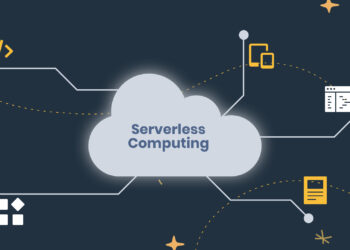In the ever-shifting landscape of digital infrastructure, a powerful paradigm shift is not just occurring—it’s accelerating at an unprecedented rate. This movement is serverless computing, a revolutionary approach to building and deploying applications that is fundamentally reshaping how businesses think about technology, cost, and innovation. What was once a niche concept for early adopters has now firmly entered the mainstream, with organizations of all sizes racing to embrace its transformative potential. The adoption of serverless architecture is no longer a question of if, but when and how.
This comprehensive article delves deep into the serverless phenomenon. We will explore its core principles, dissect the powerful drivers behind its meteoric rise, and navigate its vast ecosystem. Furthermore, we will examine its practical applications, honestly address its inherent challenges, and look ahead to the exciting future it promises. Prepare to understand why serverless is not just another buzzword, but the next logical step in the evolution of cloud computing.
From Monolithic Giants to Agile Functions: A Brief History
To truly appreciate the serverless revolution, one must understand the journey that led us here. The history of software architecture is a story of continuous abstraction, with each new model seeking to solve the inefficiencies of its predecessor.
Initially, the digital world was dominated by monolithic applications. These were massive, self-contained units where all code for every function—from user interface to data processing—was bundled into a single, indivisible program. While straightforward to develop initially, they became nightmares to update, scale, and maintain. A small change required redeploying the entire application, and a failure in one component could bring the whole system down.
The first major evolution was the advent of virtual machines (VMs). VMs allowed companies to run multiple applications and operating systems on a single physical server, a massive leap in efficiency. However, each VM still carried the full weight of its own operating system, leading to significant resource overhead and slow boot times.
Next came containers, championed by technologies like Docker and orchestrated by platforms like Kubernetes. Containers offered a lighter-weight solution by packaging an application and its dependencies into a single, portable unit that shared the host system’s OS kernel. This dramatically improved deployment speed, portability, and resource utilization. Yet, even with containers, a significant burden remained: the management of the underlying infrastructure. Teams still had to provision servers, manage container clusters, handle scaling policies, and apply security patches.
This is the critical juncture where serverless enters the stage. It represents the ultimate level of abstraction, promising to free developers almost entirely from the concerns of the underlying infrastructure. It asks a simple yet profound question: what if you could just write your code and let someone else handle everything required to run and scale it?
Demystifying Serverless: What It Really Means
The term “serverless” is, ironically, a bit of a misnomer. Servers are still very much involved. The crucial difference is that developers and organizations no longer have to provision, manage, or even think about them. The cloud provider takes on the entire responsibility of executing code in response to events, managing all the necessary compute resources dynamically.
At the heart of serverless computing lies the concept of Function as a Service (FaaS). This model allows developers to upload and execute small, discrete blocks of code—or functions—that are triggered by specific events. An event could be anything from an HTTP API request to a new file being uploaded to cloud storage, a new entry in a database, or a message arriving in a queue.
When a trigger occurs, the cloud provider instantly allocates the precise amount of compute resources needed to run that function. Once the function completes its task, those resources are released. The entire process is stateless and ephemeral. This model is complemented by Backend as a Service (BaaS), where cloud providers offer managed backend services like databases (e.g., AWS DynamoDB, Google Firestore), authentication services, and file storage, which serverless functions can easily leverage.
The Core Drivers: Why Serverless Adoption is Skyrocketing
The rapid embrace of serverless is not accidental. It is fueled by a compelling set of business and technical advantages that directly address the primary pain points of modern software development.
A. Unparalleled Cost-Effectiveness and Financial Efficiency This is arguably the most significant driver for many organizations. In traditional and even container-based models, you pay for server capacity to be ‘on’ and waiting, regardless of whether it’s processing requests. This leads to substantial costs for idle resources. Serverless completely shatters this model with its pay-per-use (or more accurately, pay-per-execution) billing. You are billed only for the precise time your code is running, often measured in milliseconds, and the exact memory it consumes. For applications with variable, unpredictable, or infrequent traffic, this translates into massive cost savings. There are no charges for idle time, period.
B. Enhanced Developer Productivity and Laser Focus Serverless abstracts away the tedious and undifferentiated work of infrastructure management. Developers are liberated from tasks like server provisioning, OS patching, capacity planning, and cluster management. This newfound freedom allows them to focus exclusively on what truly adds business value: writing code and building features. This not only boosts productivity but also improves developer morale, as they can spend their time on creative problem-solving rather than operational chores.
C. Automatic, Effortless, and Seemingly Infinite Scalability Scaling traditional infrastructure is a complex and often manual process. Scaling serverless applications, on the other hand, is an inherent feature of the platform. If a function suddenly receives one hundred thousand concurrent requests instead of ten, the cloud provider’s platform automatically handles it, spinning up instances of the function in parallel. This scaling is transparent, rapid, and managed entirely by the provider. The business never has to worry about over-provisioning for peak loads or being caught off-guard by a sudden surge in traffic.
D. Drastically Reduced Operational Overhead The operational burden of maintaining servers is a significant drain on resources. It involves a dedicated team (or at least dedicated time) for monitoring, patching, security hardening, and hardware lifecycle management. By offloading these responsibilities to the cloud provider, serverless drastically reduces this operational overhead. This allows organizations, especially startups and small businesses, to operate with leaner teams and still build highly reliable and scalable systems.
E. Accelerated Time-to-Market In today’s competitive landscape, speed is paramount. The combination of increased developer focus and reduced operational friction means that teams can move from idea to deployment much faster. Developers can build and deploy individual functions independently, enabling a more agile and iterative development process. This ability to rapidly launch new features and services provides a critical competitive advantage.
F. Inherent High Availability and Fault Tolerance Because serverless platforms are managed by major cloud providers like Amazon, Google, and Microsoft, they are built on top of highly resilient, multi-availability zone infrastructure. By default, applications built on serverless functions have high availability baked in. There is no single point of failure associated with a specific server, as the execution environment is abstract and distributed.
The Serverless Ecosystem: A Guide to the Major Players
The serverless market is a vibrant and competitive space dominated by the major cloud hyperscalers, each offering a robust FaaS platform.
-
AWS Lambda: Launched in 2014, AWS Lambda is the pioneer and current market leader in the FaaS space. It boasts the most extensive feature set, the widest range of integrations with other AWS services, and a massive community. Lambda supports a plethora of programming languages and provides a rich ecosystem of tools and frameworks, such as the AWS Serverless Application Model (SAM), to streamline development.
-
Azure Functions: Microsoft’s powerful competitor, Azure Functions, offers a highly flexible and developer-friendly experience. It is distinguished by its excellent support for multiple languages, including first-class support for .NET, and its “Durable Functions” extension, which simplifies the creation of complex, stateful orchestrations—a common serverless challenge. Its seamless integration with the broader Azure ecosystem makes it a natural choice for organizations invested in Microsoft technologies.
-
Google Cloud Functions: Google’s offering in the FaaS arena, Google Cloud Functions, is known for its simplicity and its powerful event-driven capabilities. It excels at connecting and extending Google Cloud services. It is particularly strong for use cases involving data processing, machine learning pipelines (integrating with services like BigQuery and AI Platform), and mobile backends (integrating with Firebase).
-
Beyond the Big Three: The ecosystem also includes other innovative players. Cloudflare Workers focuses on running serverless functions at the edge of the network, drastically reducing latency for global users. Platforms like Vercel and Netlify have popularized serverless functions as the go-to solution for building dynamic functionality on top of static or “Jamstack” websites, simplifying web development workflows.
Real-World Use Cases: Where Serverless Architecture Excels

Serverless is not a silver bullet for every problem, but it shines brightly in a wide variety of applications.
A. Web Application Backends and REST APIs Instead of a monolithic backend server, developers can build microservices-based APIs where each endpoint (e.g., /users, /products) corresponds to a specific serverless function. This approach is highly scalable, cost-effective, and easy to maintain.
B. Real-Time Data Processing and ETL Pipelines Serverless functions are perfect for processing streams of data in real-time. For example, a function can be triggered every time a new piece of data lands in a data stream (like Amazon Kinesis or Google Pub/Sub). It can then transform, enrich, and load this data into a data warehouse or another destination—a classic Extract, Transform, Load (ETL) pattern.
C. IoT (Internet of Things) Backends IoT devices can generate massive volumes of sporadic event data. Serverless is an ideal backend for these scenarios. Functions can be triggered by messages from thousands or even millions of devices, processing telemetry data, executing commands, and flagging anomalies without the need for a massive, always-on server fleet.
D. Chatbots and Virtual Assistants The logic for a chatbot can be encapsulated in a serverless function. When a user sends a message, an API gateway triggers the function, which processes the natural language, queries a database, and returns a response. The pay-per-use model is perfect for the intermittent nature of user conversations.
E. Scheduled Tasks and Automation (Cron Jobs) Serverless platforms provide event triggers that can run functions on a schedule. This is a modern, reliable, and cost-effective replacement for traditional cron jobs, perfect for tasks like generating nightly reports, cleaning up databases, or performing routine system maintenance.
F. Multimedia Processing A common use case is to trigger a function whenever a new image or video is uploaded to cloud storage. This function can then automatically perform tasks like generating thumbnails of different sizes, watermarking images, or transcoding videos into various formats.
Navigating the Hurdles: The Challenges of Serverless
Despite its many benefits, adopting a serverless architecture comes with its own set of challenges that organizations must be prepared to address.
A. Vendor Lock-in Because serverless functions are deeply integrated with the cloud provider’s ecosystem (their event sources, databases, and authentication systems), migrating a complex serverless application from one cloud provider to another can be difficult and costly.
B. Cold Starts and Latency When a function is invoked after a period of inactivity, the cloud provider needs to initialize a new execution environment for it. This process, known as a “cold start,” can introduce a noticeable amount of latency (from a few hundred milliseconds to several seconds). While providers are constantly improving this, it can be a concern for highly latency-sensitive applications.
C. Complexity in Monitoring and Debugging A serverless application is a distributed system composed of many small, independent functions. Tracing a single user request as it flows through multiple functions can be challenging. This requires a new approach to observability, relying on specialized tools for distributed tracing, logging, and metrics aggregation to gain a holistic view of the application’s health.
D. New Security Considerations While providers secure the underlying infrastructure, the responsibility for application security shifts. Security must be managed at a more granular, function-level. Each function has its own set of permissions (its “attack surface”), and managing these permissions across hundreds of functions can become complex without proper automation and governance.
E. Cost Predictability at Scale While serverless is often cheaper, its cost model can be less predictable. A misconfigured function, an infinite loop, or a denial-of-service attack could lead to a massive number of invocations, resulting in a surprisingly high bill. Implementing cost monitoring and alerts is crucial.
Serverless vs. Containers: Choosing the Right Tool for the Job

A common debate in modern architecture is whether to use serverless or containers (like Kubernetes). The truth is, they are not mutually exclusive enemies but rather two powerful tools designed for different purposes.
-
Choose Serverless when: Your application is event-driven, has unpredictable or bursty traffic patterns, you want to prioritize developer velocity and minimize operational overhead, or you are building microservices or task automation.
-
Choose Containers when: You need full control over the execution environment (e.g., a specific OS version or custom binaries), your application has consistent, high-volume traffic, you have long-running processes, or you are migrating existing legacy applications that are not easily broken down into functions.
Increasingly, the most effective approach is a hybrid model, using both technologies for what they do best within the same application. For example, a core, long-running service might run in a Kubernetes cluster, while peripheral, event-driven tasks like image processing or notifications are handled by serverless functions.
The Future is Now: What’s Next for Serverless?
The serverless journey is far from over. The future promises even more innovation and wider adoption. We can expect to see advancements in several key areas:
- Improved Tooling: The ecosystem of development, deployment, and observability tools will continue to mature, making it even easier to build and manage complex serverless applications.
- Solving Statefulness: While traditionally stateless, new patterns and services (like Azure Durable Functions and AWS Step Functions) are making it easier to build stateful, long-running workflows in a serverless manner.
- Enterprise Adoption: As security and governance tools improve, we will see deeper penetration of serverless into core systems within large enterprises.
- Serverless at the Edge: The trend of running serverless functions on edge networks will accelerate, enabling a new class of ultra-low latency global applications.
- AI/ML Integration: Serverless will become the default compute layer for many AI/ML inference tasks, allowing models to be deployed and scaled cost-effectively.
Embracing the Inevitable Shift
The accelerated adoption of serverless architecture is a testament to its compelling value proposition. It offers a clear path to building more scalable, cost-efficient, and agile applications by fundamentally changing the relationship between developers and infrastructure. While it introduces new challenges and requires a shift in mindset, the benefits of increased productivity, reduced operational burden, and faster innovation are too significant to ignore.
Serverless is more than a technology; it is a paradigm shift that empowers organizations to focus on their core business logic and deliver value to their customers faster than ever before. For businesses looking to thrive in the digital-first era, embracing the serverless surge is not just an option—it’s a strategic imperative.
















